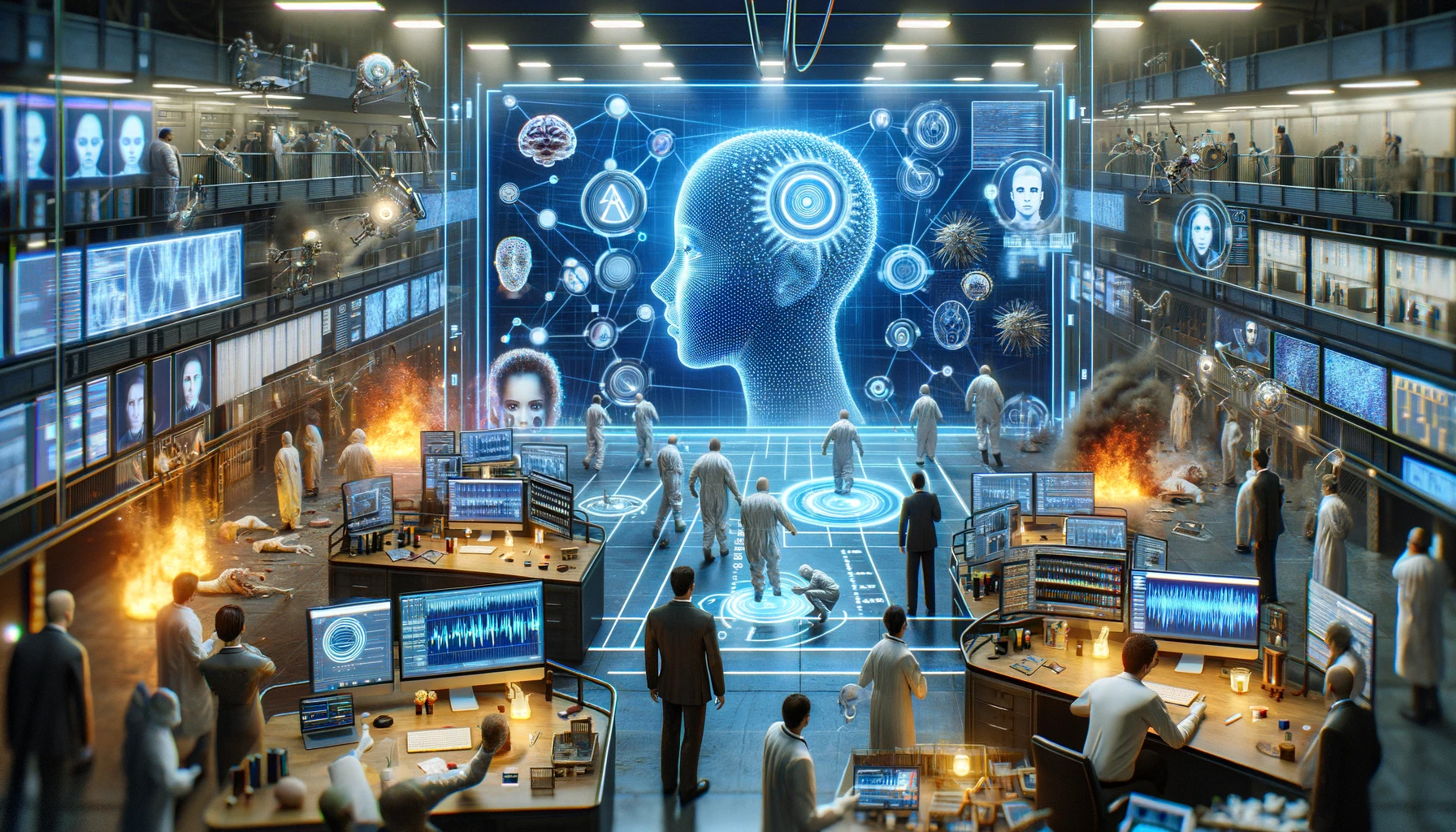As the world’s most advanced forensic science tools come online, the game-changing potential of AI in crime scene analysis is about to send shockwaves through law enforcement agencies worldwide. Buckle up and get ready to explore the thrilling frontiers of artificial intelligence as it transforms the field.

Before we dive into the revolutionizing aspects, let’s take a moment to acknowledge the existing hurdles faced by forensic scientists. With the sheer volume of data generated at crime scenes today, processing and interpreting vast amounts of information has become a monumental task. Additionally, the integration of disparate evidence sources – from DNA analysis to surveillance footage – often proves daunting, leaving room for human error and bias.
Now, imagine a world where AI-powered tools can alleviate these challenges by automating tedious tasks, enhancing accuracy, and speeding up the analysis process. Machine learning algorithms for facial recognition and identification are already yielding impressive results, while artificial intelligence-boosted DNA analysis is helping solve cold cases that have gone unsolved for decades. Computer vision techniques are also transforming video surveillance footage into actionable leads, and natural language processing (NLP) is streamlining the processing of written testimony.
Facial recognition technology relies on deep learning models that can accurately identify individuals based on their unique facial features. These models are trained using large datasets of labeled images, allowing them to learn patterns and make accurate predictions about new faces they encounter. In the case of DNA analysis, machine learning algorithms such as k-nearest neighbors (k-NN) and support vector machines (SVMs) can be used to classify genetic markers and identify potential matches between crime scene samples and suspect databases.
The benefits of using AI in forensic science are undeniable. By leveraging machine learning algorithms, forensic experts can improve accuracy, efficiency, and pattern recognition – all while reducing errors and handling massive datasets with ease. This means that crime scene analysis will become more precise, efficient, and effective than ever before.
One of the primary advantages of using AI in forensic science is its ability to mitigate the effects of human error and cognitive biases that can lead to flawed investigations. By automating repetitive tasks, such as image analysis or data entry, AI-powered tools reduce the likelihood of mistakes due to fatigue or distraction. Additionally, machine learning algorithms are designed to be objective and unbiased, ensuring consistent results across different cases and minimizing the influence of personal prejudices on investigations.
One notable example of AI’s impact on forensic science is the use of facial recognition technology to catch a notorious serial killer. Another case saw a major theft ring brought down through AI-enhanced video analysis. And in a historic DNA sample match, machine learning algorithms helped link a long-standing cold case to its perpetrator.
In 2018, police in New Delhi used AI-powered facial recognition technology to identify and apprehend one of India’s most wanted criminals after he was caught on CCTV camera at a busy marketplace. Similarly, during the investigation into the Boston Marathon bombing, computer vision techniques were employed to analyze thousands of hours of video footage from security cameras along the race route, ultimately leading to the identification and capture of the suspects.
As AI continues to transform forensic science, we can expect increased adoption and standardization of AI-powered tools. Hybrid human-AI teams will become the norm, leading to more effective analysis and collaboration. Additionally, AI-generated suspect profiles and predictive policing may soon become reality.
Predictive policing is an emerging field that leverages machine learning algorithms to analyze crime data and identify patterns, allowing law enforcement agencies to allocate resources more effectively and proactively prevent criminal activity. By integrating real-time data from various sources – such as social media platforms or GPS tracking devices – AI systems can generate actionable insights for police officers on the ground, enabling them to respond quickly to potential threats and reduce crime rates in their jurisdictions. However, concerns about privacy violations and algorithmic bias must be addressed before predictive policing becomes widely adopted within law enforcement agencies.
While the benefits of AI in forensic science are undeniable, there are potential concerns and challenges to consider. Ethical implications – such as algorithmic bias – must be addressed, ensuring that AI-powered tools remain trustworthy and unbiased. Similarly, data privacy and access control will require careful consideration.
As we step into this new era of crime scene analysis, it’s clear that the future is bright, thanks to AI’s game-changing potential in forensic science. As always, stay tuned for more on the fascinating intersection of technology and law enforcement!
Takeaways
- AI’s ability to collect, analyze, and process vast amounts of data allows for the creation of market insights that were previously unavailable or too time-consuming to gather manually.
- By analyzing vast datasets, AI can identify patterns and trends that would be difficult or impossible for humans to detect, enabling more informed investment decisions, better risk assessment, and more accurate predictions.
- In real estate, Zillow uses AI to predict home values with remarkable accuracy by analyzing millions of data points including property characteristics, historical sales prices, and local market trends.
- AI-powered pricing algorithms ensure that prices reflect the true value of goods or services, rather than being manipulated by those with better access to information.
- Increased competition may lead to reduced profit margins or new business opportunities as AI continues to shape the market landscape.
- The shift towards AI-driven insights may influence investor decisions and changes in market trends.
- Organizations must prioritize data quality and transparency, invest in robust security measures, and work closely with regulators for responsible use of AI in financial markets.